Video games and gun violence
With emerging evidence that the mass killers in the Newtown, Connecticut, and Aurora, Colorado, shootings were hooked on violent video games and movies before committing their atrocities on innocent people, experts on an Emerson panel discussion March 18 disagreed on whether censorship is the answer.
But the two most vocal panelists agreed that violence in the media has to be curtailed—in some way—for the nation to make a dent in reducing gun deaths. The comments came during the panel discussion “Gun Violence in Media and Electronic Games” at the Semel Theater.
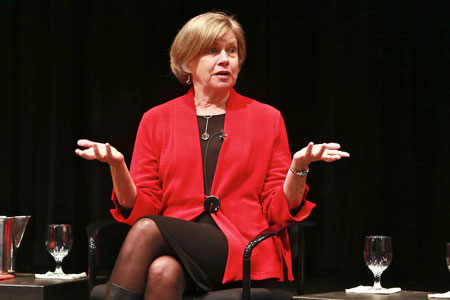
“I’m not in favor of censorship,” said Nancy Carlsson-Paige, professor emerita at Lesley University and founder of the University’s Center for Peaceable Schools. “But there’s a difference between censorship and what’s happening right now, which is deliberate marketing toward children.”
Dan Isett, director of public policy for the Parents Television Council, did not outright call for censorship during the discussion but hinted that the Federal Communications Commission should impose heavier regulations on violence that can be broadcast.
“The Communications Act of 1934, which created the FCC, mentions the term ‘the public interest’ 134 times,” Isett said. “Here we are, 80 some odd years later, and isn’t it about time we had a real discussion about whether…what’s going on here is in the public interest?”
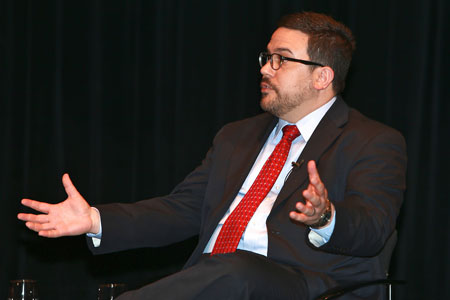
Isett said his organization counted 934 violent images broadcast in primetime on the broadcast networks alone between January 11 and February 11.
“Censorship is not the answer,” said David Horowitz, executive director of the Media Coalition, which is dedicated to defending First Amendment rights. “It’s really up to each individual parent to make a decision for their own child.”
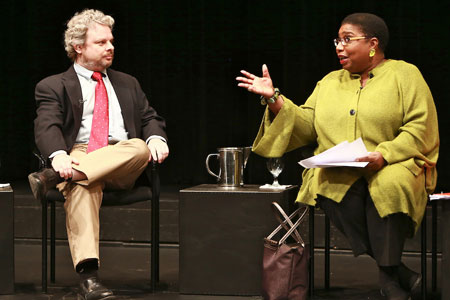
The panelists, which also included Dr. T. Atilla Ceranoglu, a child and adolescent psychiatrist whose work includes researching the clinical effects of video games on children, took part in the second of a four-part discussion series titled Made in America: Our Gun Violence Culture, which began as part of Emerson President Lee Pelton’s initiative to increase dialogue on gun violence in the wake of the Newtown, Connecticut, school shooting last December.
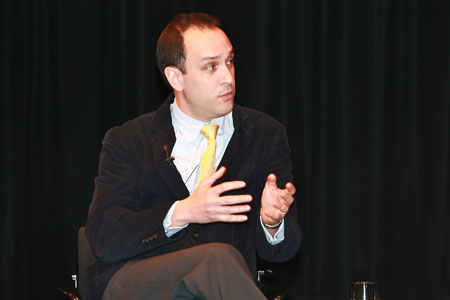
The March 18 discussion was hosted by Callie Crossley, radio and TV news host for WGBH.
There are 300 million guns in the United States, which means one for every American and 45 percent of households, according to Crossley, who mentioned the statistics at the beginning of the discussion.
“In other countries, similar violent media is consumed,” Horowitz said. “In Japan…they have media which is actually far more violent and their gun crime is just a fraction of what it is in the United States. What’s different in the United States is guns.”
The panelists disagreed on whether there were conclusive studies linking violent video games to gun violence.
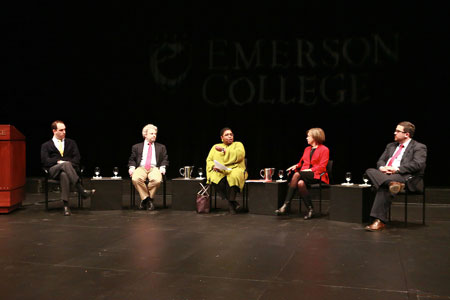
But Carlsson-Paige, who has written several books and spoken extensively on the impact of media in children’s social development, said it is the marketing of toys and products associated with violent movies and video games that is most detrimental.
“Marketing violence to young children is absolutely unethical and should be regulated,” Carlsson-Paige said. “I’m not only concerned about the kid growing up and being a shooter. I’m concerned about kids who come to pre-school and start drawing blood on paper. There are a lot of social and emotional effects that are subtle, but they’re important.”
Carlsson-Paige and Isett both disagreed with Horowitz’s earlier argument that parents should better monitor what TV shows and video games children consume.
“I basically have a computer in my pocket,” Isett said. “Fifteen years ago, nobody had a computer in their pocket.”
“Parents monitoring their kids is a dream from the past,” Carlsson-Paige said. “Most families have two working parents. They’re not sitting there looking at TV with their kids.”
Carlsson-Paige and Isett also blasted the entertainment industry for not adhering to its own standards when placing ratings on video games and movies. “The Harvard School of Public Health did a study that shows that movie(s) that were rated ‘R’ 15 years ago, 10 years later were rated ‘PG-13.’ There’s more and more violence in the media that is acceptable,” she said. “We aren’t creating a social environment that is nurturing, caring, loving. We’re not creating that kind of society.”
Categories